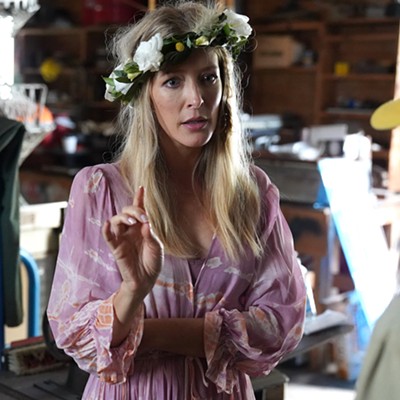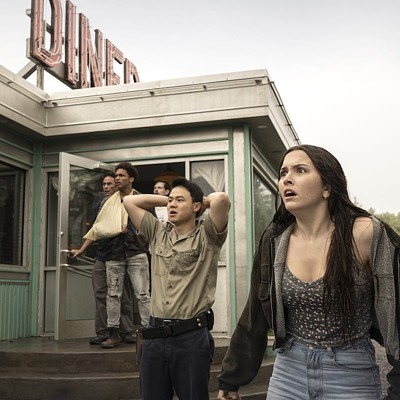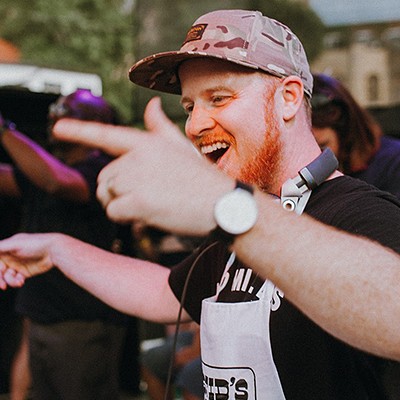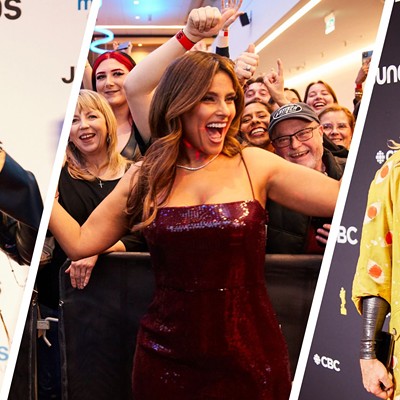The second funniest joke in Shrek the Third could have served as a warning to the movie itself. The titular green ogre (voice of Mike Myers), his sidekick Donkey (Eddie Murphy) and Latin catthrob Puss in Boots (Antonio Banderas) have left the land of Far Far Away to find a replacement for the king. They arrive at a medieval approximation of a modern American high school where the students are gathered in the gym for a "Just Say Nay" assembly.
It's sound advice. The sequel's name "The Third" denotes a third helping of the same six-year-old meal.
Shrek the Third isn't painful, and for brief intervals it's even inspired. But the specific formula that made some critics embrace the original can only stretch so far without handing the reins over to characters' charms. And that doesn't happen.
When it came out in 2001, the first Shrek was overvalued by reviewers struck by the novelty of a post-modern animated fairy tale. Yet it was only doing for cartoon features what Scream had done for horror and Moulin Rouge was doing for movie musicals—bringing an outspoken awareness of the genre's conventions. It also scored points for taking swipes at the institutional stranglehold of Disney.
Two movies later, Shrek is its own institution. Now what fans enjoy isn't the pop culture references, but the dynamics of Shrek and Donkey.
The huge miscalculation of scoring King Harold's (John Cleese) burial scene to Wings' "Live and Let Die" shows the movie struggling to be hip at the expense of its integrity. Not only do the makers miss the song's meaning, they cheapen the dramatic event with its inclusion. What kind of psychopath mournfully stands at a funeral with "Live and Let Die" playing in their head?
This isn't an example of a sequel trying for something new and overestimating itself, but of one reaching for the same thing and failing. There are places where Shrek the Third could branch out to distinguish itself. As Shrek learns that his emerald-green wife Fiona (Cameron Diaz) is pregnant, the potential to reexamine these fairy tale characters through a parody of Western sitcoms about domestic life is too great. So it's not going there.
The gang's adventures are just a backdrop on which to hang clever comic references. It's sometimes funny, but it barely creates an impression. The draw of seeing a hugely popular movie like this is that everyone else is seeing it too. It becomes a shared experience—a way to be connected with the rest of the world. But if the movie can barely be remembered in a year, what difference does it make?
Even the obvious campfire-side male bonding between Shrek and potential King-to-be Artie (Justin Timberlake) skimps on poignancy. Here, Shrek and Artie's fear of responsibility (fatherhood and sovereignty) has no gravity. Shrek the Third won't commit to either Happy Feet's experienced truth or Ice Age: The Meltdown's Looney Tunes delirium.
Part threes are often a step down in a series. It's true of The Godfather, Spider-Man, Superman, Batman, Indiana Jones, The Terminator, the original Star Wars trilogy, Alien, Spy Kids, Lethal Weapon, and others. Shrek the Third shares with the new Spider-Man an unwillingness to step up its game visually. Its animation lacks the distinguished style and risk that gave 1998 tentpoles Mulan and The Prince of Egypt (both of which used cross-culture influences and old and new technologies) their vibrancy.
The sequel hasn't been imagined as the next level with which to bring Shrek. It's just more of the same, served a little colder.
Get to third base via email: [email protected]














